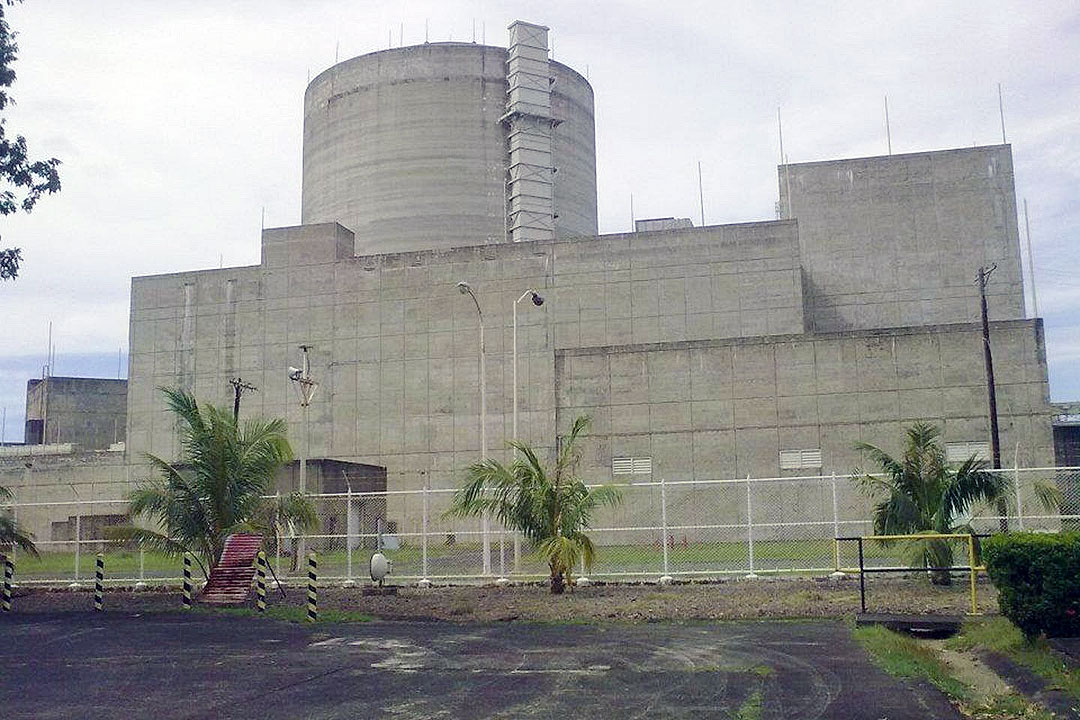A TOTAL of 10 sites in Cagayan, Palawan and Zamboanga provinces as well as Negros Island have been identified as potential locations for nuclear power plants, among the 15 initially shortlisted nationwide.
The 10 sites, according to a document obtained by BusinessWorld, are Racat Rapuli, Sinuangan and Matara Point in Sta. Ana, Cagayan; Concepcion and Tagbarungis in Puerto Princesa, Palawan; Sipalay and San Carlos, Negros Occidental; Bayawan, Negros Oriental; and Piacon Point and Cauit in Siocon, Zamboanga.
The 15-site shortlist is being studied by the Nuclear Energy Program Inter-Agency Committee (NEP-IAC). The others are Bagac, Bataan; San Juan, Batangas; Padre Burgos, Quezon; Ternate, Cavite; and General Santos City.
These sites were first identified in studies conducted as far back as the 1970s and as recently as 1995. Their suitability to continue on as candidate sites is currently under review.
NEP-IAC Chairman and Spokesperson Gerardo D. Erguiza, Jr. told BusinessWorld that the updating of the list of suitable sites has been delayed by the pandemic. The review process includes determining whether the original selection criteria remain valid.
Two months ago, Mr. Erguiza said in a Laging Handa briefing that the 15 sites “will be subjected to rigorous evaluation which will involve the inputs of experts around the world, including those from the International Atomic Energy Agency.”
Philippine Nuclear Research Institute (PNRI) Director Carlo A. Arcilla said President Rodrigo R. Duterte has to sign off on the NEP-IAC’s recommendations on adopting a national position on nuclear energy program before further consideration of the 15 sites.
The committee submitted its report to the President in December last year.
“Kung hindi pinirmahan ‘yung recommendation namin, (ni) Presidente, bale wala lahat ‘yung 15 sites. Even BNPP (Bataan Nuclear Power Plant), bale wala. (If the President does not sign our recommendation, nothing will happen with the 15 candidate sites and even the BNPP) Because the first step is the declaration of policy of the national,” he told BusinessWorld in an online interview last week.
The PNRI is a member of the NEP-IAC.
“(The recommendation) has been on the desk of the president since December and I have been eagerly waiting for (it) to be signed. When (Mr. Duterte) signs that, it will start the nuclear ball rolling, and part of that includes the management, financing, (and) siting of nuclear projects, among others,” he said.
Years of further study will be required to make a final site selection, he said.
“The number one study is stakeholder agreement. If people do not agree to it, we cannot pursue it. You cannot build a nuclear plant without the agreement of the people around it,” Mr. Arcilla said.
He has said that nuclear has the potential to address the demand for baseload power, adding that it can “back up solar and wind, even more stably than coal.”
In a statement issued on Friday, Energy Secretary Alfonso G. Cusi said nuclear energy can potentially contribute to the obtaining energy security and sustainability.
“It is high time that the feasibility of safely utilizing nuclear energy to meet our energy requirements be considered,” he said.
If the Philippines pursued nuclear power decades ago, its socio-economic landscape might have been “extremely different” and at par with developed countries such as South Korea, which has its own national nuclear energy program, according to Mr. Cusi. — Angelica Y. Yang
